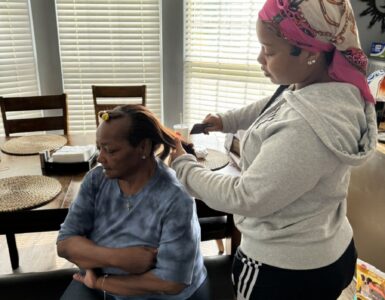By Maddison Canzano
Rural healthcare has its pros and cons, just like everything else. Let’s start with the pros
–privacy, being surrounded by nature, and even less pollution. Though sometimes, the
cons outweigh them: One of those main cons is healthcare.
Healthcare is very important everywhere, but according to Linda Villarosa, author and
journalist for The New York Times,“The United States spends more on healthcare than
any other country, approximately $1,443 per person per year.” This information was
found on https://www.statnews.com/
However, money doesn’t always buy good health: The U.S. has a higher infant death
rate than other countries such as Australia and our lifespan is much lower than some
other wealthy countries, by approximately 3.7 years. This shows that even though the
U.S. has much more money, we do not have a good healthcare system.
Hospitals in rural areas are few and far-between. Since rural towns often don’t have
many hospitals, it sometimes takes hours to get to one. Dr. Mark S. Johnson, Chair of
the Department of Community and Family Medicine, said some hospitals aren’t
prepared for patients and they may have to move them to a bigger hospital.
Additionally, according to the USDA, rural areas historically tend to be less diverse.
“Rural America is less racially and ethnically diverse than the nation’s urban areas.” For
African Americans in rural areas, this can mean experiencing medical racism at the
hands of a white person working in hospitals and other healthcare settings. Medical
News Today says, “In addition to the limited access to trauma centers that people in
predominantly Black areas have, evidence suggests racial bias may prevent people of
color from receiving emergency care.” Racism in health care is still as prevalent as it
was in the 1960’s, but in a different way. Even if it isn’t often shown visually it is still
there.
Let’s look at what could happen to the patient during this process due to these factors. If
the patient is severely injured, they might die while being transferred to another hospital.
Even if they only have a cut, it could get infected with something on the way. Since the
hospitals are so far away, it is harder to get the care you need. According to
usnews.com, “It takes an average of 34 minutes to get to the nearest hospital for rural
Americans whose travel time is the longest, compared with six minutes for those whose
travel time is shortest.”
Rural hospitals tend to have to care for chronically ill patients, so they don’t have as
much room for new patients. This causes a stand still in hospitals and another reason
why they may not be prepared for more patients. If they have to constantly care for the
same people, over and over, they will never get to the new patients.
According to the American Hospital Association, “Rural hospitals are the cornerstones of their communities, serving as key access points of care for nearly 20% of Americans.”
Rural hospitals, though there aren’t many, are very important. They help all of the
people in those areas, and we need them. If people can’t get to them or if they can’t get
help, people will not get the care that they need. We need to make healthcare for
people living in rural areas easier to access, or it will hurt everyone.





Recent Comments